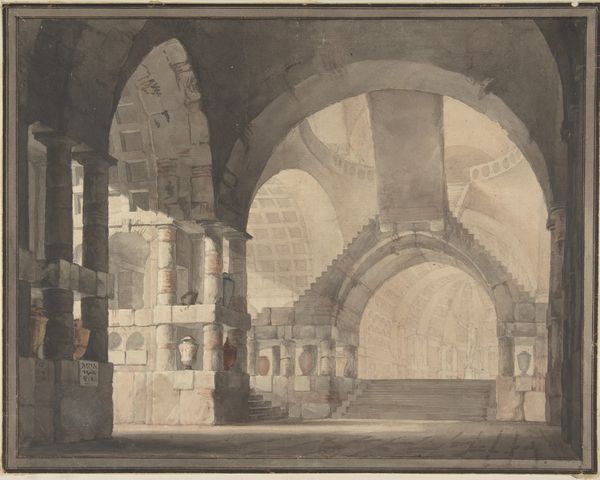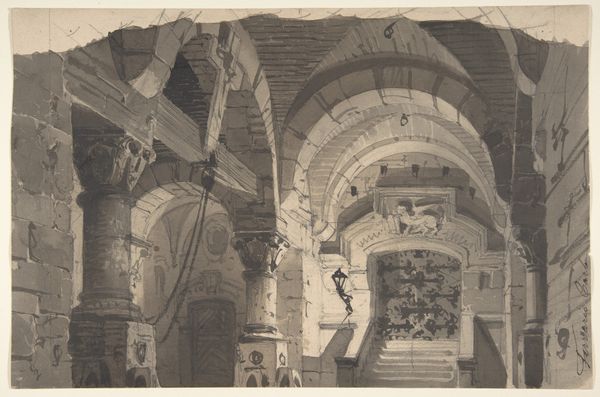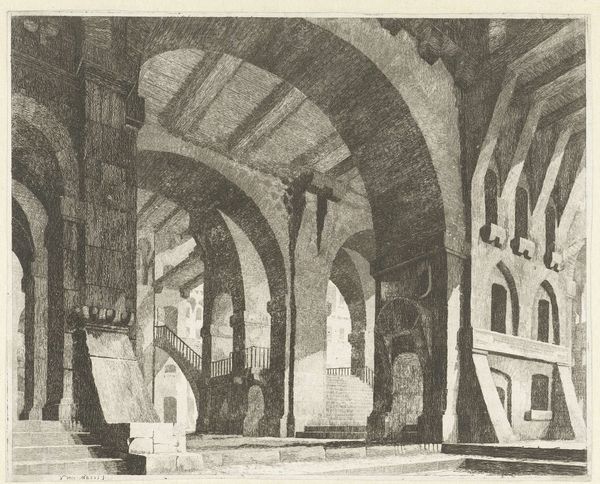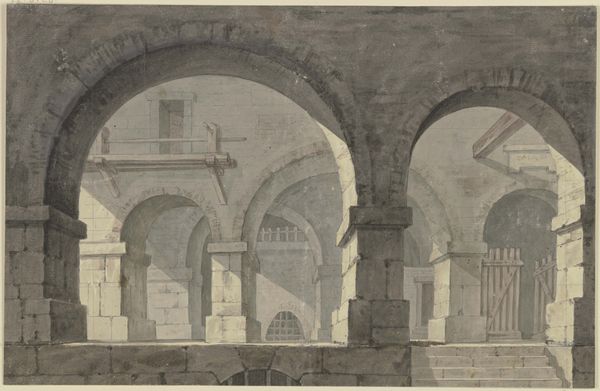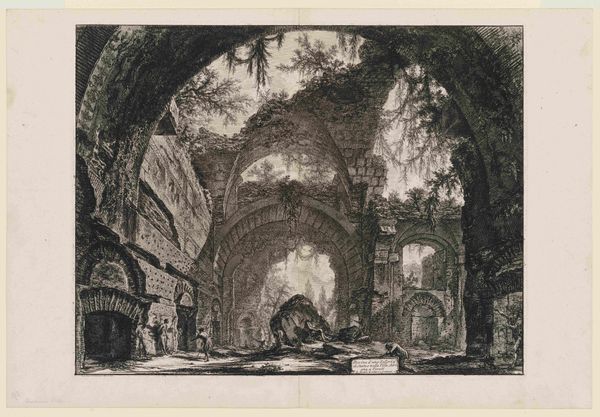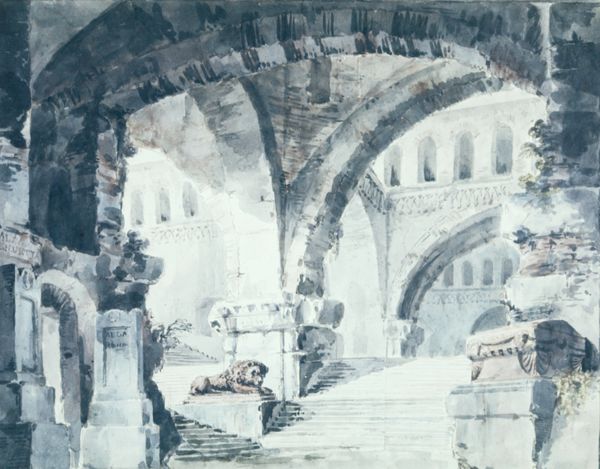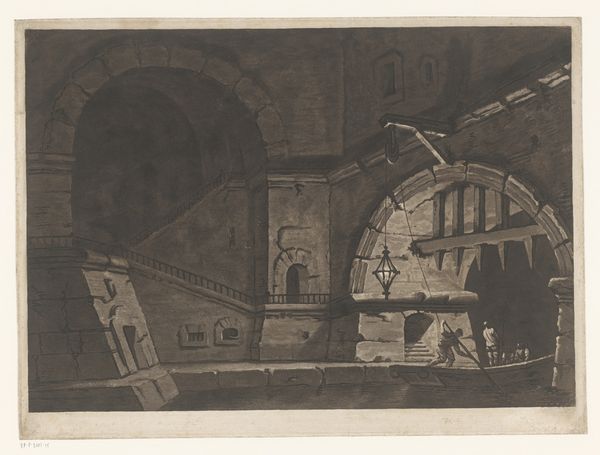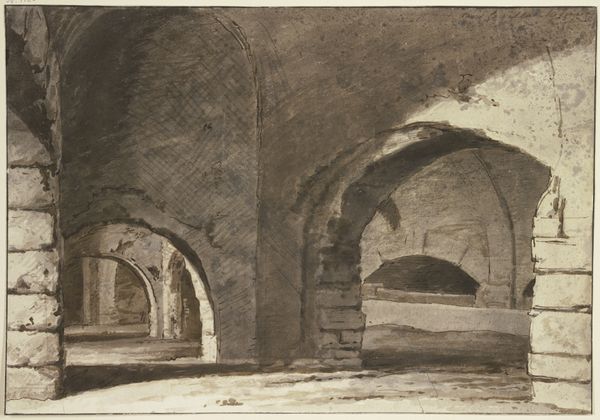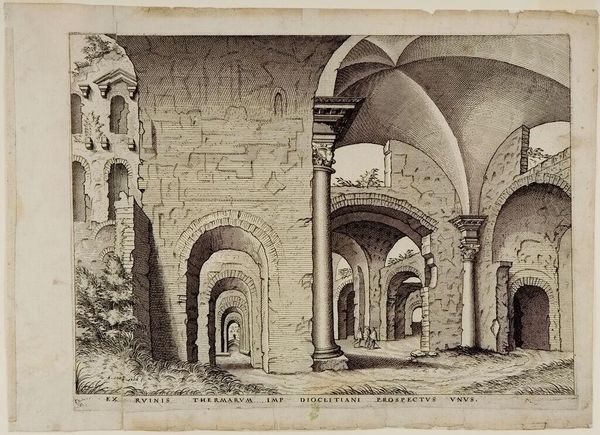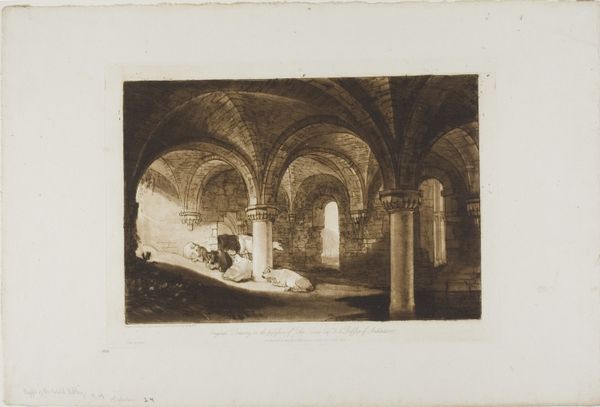
Interieur van een groot antiek gebouw met tongewelven en een koepelsubstructie Possibly 1730 - 1850
0:00
0:00
giovannibattistapiranesi
Rijksmuseum
#
shading
#
amateur sketch
#
aged paper
#
toned paper
#
light pencil work
#
pencil sketch
#
sketch book
#
incomplete sketchy
#
charcoal drawing
#
watercolor
Dimensions: height 283 mm, width 399 mm
Copyright: Rijks Museum: Open Domain
Curator: This is Giovanni Battista Piranesi's "Interior of a Large Antique Building with Barrel Vaults and a Dome Substructure," likely created sometime between 1730 and 1850. Look closely at the toned paper. What's your initial reaction to the piece? Editor: It evokes such a cavernous and sombre atmosphere. The sketchiness of the rendering makes the architecture feel almost ghostly. You feel as though you could get lost in it. Curator: I agree. Piranesi's handling of line and shading creates a play of light and shadow that defines the architectural forms. Note how the arches and vaults are built from short marks; notice the semiotics of the light, the dark lines. It lends the sketch both monumentality and an ephemeral quality. Editor: It also highlights a social context, don't you think? These kinds of monumental spaces speak of power, of course, but here they’re presented in ruin. The image prompts one to think about colonialism and Italy’s place in it: Who had access to these spaces? What labor produced them? The crumbling nature of the space really resonates with an exploration of themes of class and exploitation. Curator: The incompleteness, that almost unfinished look, might not only reflect Piranesi's process. You could be right about historical power relationships but that incompleteness might be something innate to the artwork and the structural elements and material used. There is also a focus on creating spatial depth with those layers. Editor: True, the artist employs varying degrees of finish to suggest depth and distance. But I would add this approach hints at the temporality of empires and grand structures which inevitably fade, returning power to those previously dominated. A decolonial stance, if you will, represented visually through incomplete and ghostly architectural detail. Curator: Well, whether a decolonial message or not, the drawing is more than a record. It's a mood piece, achieved through technical prowess. Editor: Perhaps the true accomplishment lies in how the material qualities themselves support, both structurally and symbolically, wider dialogues on cultural loss and, hopefully, recuperation. Curator: I hadn't thought of that but now the building as a signifier seems richer to me. Editor: Glad to be of service. It shows how much context matters.
Comments
No comments
Be the first to comment and join the conversation on the ultimate creative platform.
